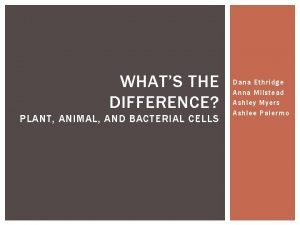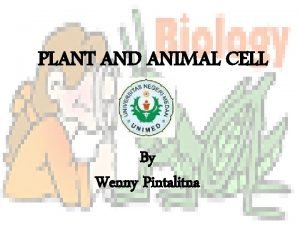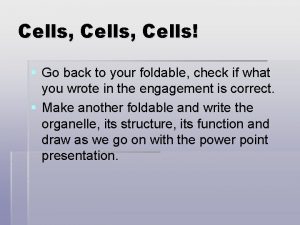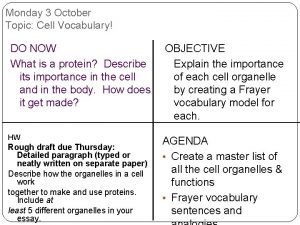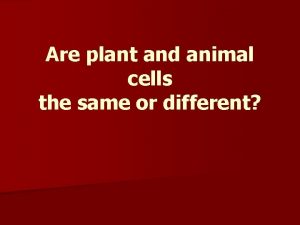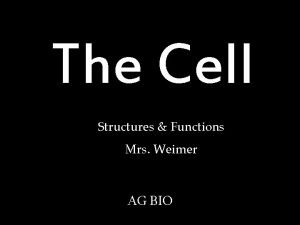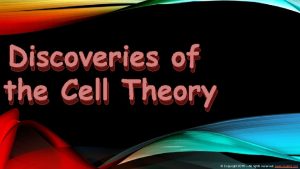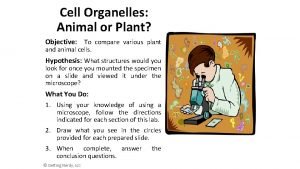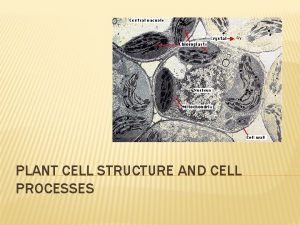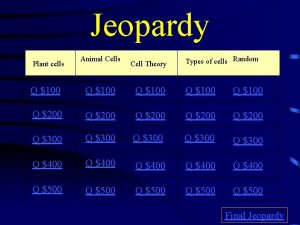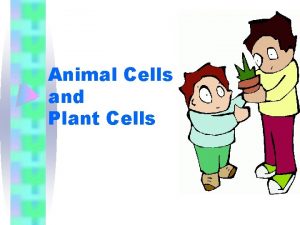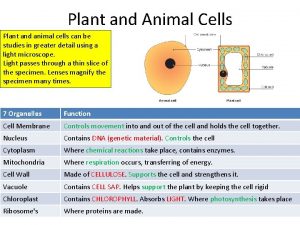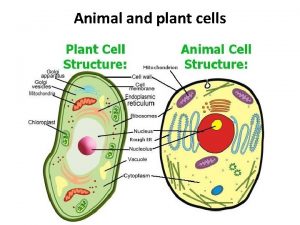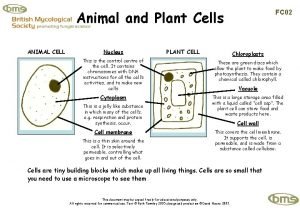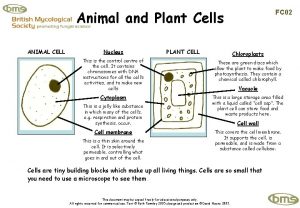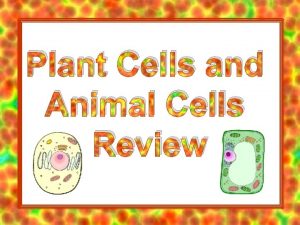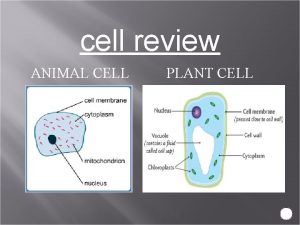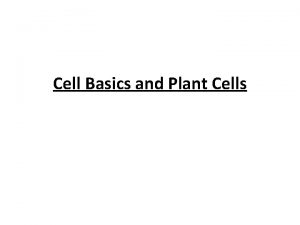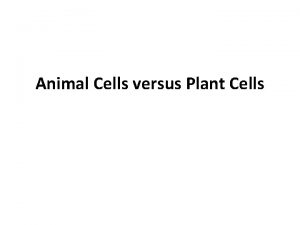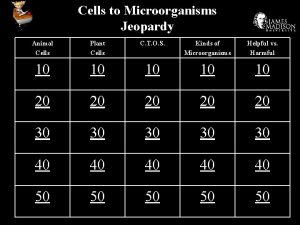Plant Vs Animal Cells The Cell Living Smallest






















- Slides: 22

Plant Vs Animal Cells

The Cell § Living § Smallest unit of life

History § Anton von Leewenhoek § First person to observe and describe microscopic organisms and living cells § Robert Hooke § Coined the term “cell” due to appearance of what he saw when looking at cork. § Robert Brown § Discovered the Nucleus

History § Matthias Schleiden § Botanist § Concluded that all plants are composed of cells § Theodor Schwann § Zoologist § Concluded that animals are made up of cells § Proposed a cellular basis for all life § Rudof Virchow § Concluded that every cell only comes from already existing cells

Cell Theory § All living things are composed of one or more cells (Schleiden) § Cells are the smallest units of life (Schwann) § New cells come only from reproduction of existing cells (Virchow)

Cell Size § Majority are minute § 1 inch contains about 500 average sized cells § Largest cell in the body = Female Egg § Pear Tree § Leaf = 50 million cells § Roots + Stems + Branches + Leaves + Fruit = More than 15 trillion


Surface to Volume Ratio Surface area = 96 mm 2 Volume = 64 mm 3

Cell Shape § Variety § Shape depends on its function

Prokaryotic vs Eukaryotic § Prokaryotic § Lacks nucleus § No organelles develop § Bacteria § Eukaryotic § Contains nucleus

Prokaryotic Cell

Eukaryotic Cells A B

Eukaryotic Cells

Structural Organization & Function § Plasma Membrane § Separate interior and anterior of cell § Bilayer = two layers of lipids § Nucleus § Localizing DNA § Cytoplasm § Everything between the cell membrane and the nucleus

Major Organelles & their Function(s) § Nucleus § Localizing DNA § Endoplasmic Reticulum (ER) § Synthesizing lipid § Golgi Bodies § Sorting and shipping proteins & lipids § Mitochondria § Efficiently producing ATP § Various Vesicles § Transporting, sorting, digesting


Non-membranous structures and Function(s) § Ribosomes § Site of protein synthesis § Cytoskeleton § Maintains cell structure § Organizes and moves organelles


Plant vs Animal Cell § Plant Cell § Cell Wall § Chloroplast § Central Vacuole (Larger) § Animal Cell § Centrioles § Vital to cell division § Lysosomes § Digestion


Cell Wall § Only present in plant cells § Two types § Primary § Just outside the cell membrane § Secondary § Forms between the primary cell wall and the cell membrane § Tough and woody § Cells are “dead”

Cell Junctions § Membrane components that project into adjoining cells and into the surrounding medium § Plants = Plasmodesmata § Channel interconnects neighboring cytoplasm to exchange substance between the cells in plants
 Animal rights and animal welfare venn diagram
Animal rights and animal welfare venn diagram Plant vs animal mitosis
Plant vs animal mitosis Plant cell structure
Plant cell structure Nucleolus function in animal cell
Nucleolus function in animal cell Idealized animal cell
Idealized animal cell Rigid outer covering of plant cells
Rigid outer covering of plant cells What is the smallest living unit in the body
What is the smallest living unit in the body Animal and plant cell similarities
Animal and plant cell similarities What cell type
What cell type Paragraph on animal cell
Paragraph on animal cell Simple vs complex carbs
Simple vs complex carbs Group of multicellular oxygen producers
Group of multicellular oxygen producers Plant and animal cell foldable
Plant and animal cell foldable Plant vs animal cells
Plant vs animal cells Whats the difference between plant and animal cells
Whats the difference between plant and animal cells Plant and animal cells
Plant and animal cells Difference between plant and animal cell
Difference between plant and animal cell Cell theory contributors
Cell theory contributors Nuclulus
Nuclulus Plant and animal cell objectives
Plant and animal cell objectives Structure of animal cell under electron microscope
Structure of animal cell under electron microscope Plant or animal cell
Plant or animal cell Plant and animal cell jeopardy
Plant and animal cell jeopardy







